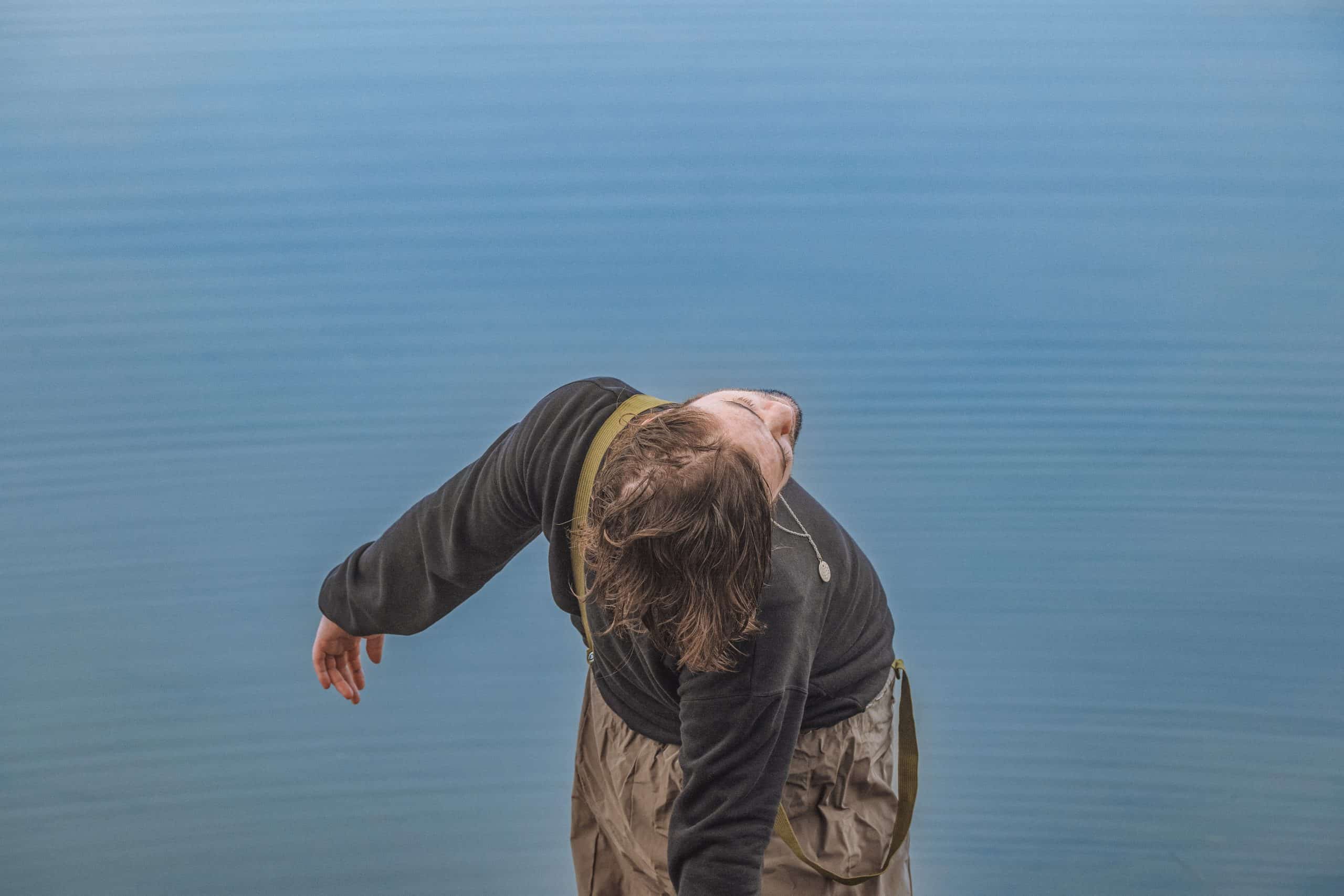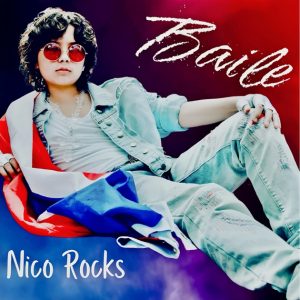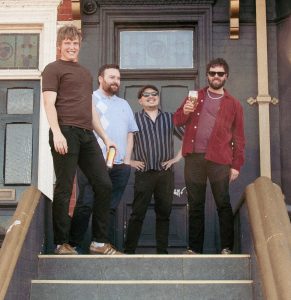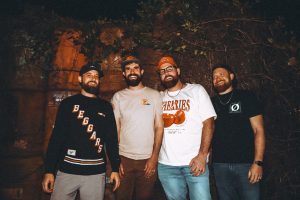Ambergrove’s debut full-length album, ‘I Love You As A Bright Horizon’, is less of a conventional record and more of a global conversation set to music. Formed in 2019 as a collaborative art project, Ambergrove is rooted in the coastal stretches of central and southern California, but its heart beats far beyond any one place or face. The collective’s ethos is clear: music transcends borders, egos, and genres – and this album is its proof of concept.
Over three meticulous years, the album evolved like an intricate puzzle, or as the band describes it, “solving a Rubik’s cube” of sound. Each track began as a raw, skeletal idea, later passed between a worldwide network of artists – each adding their own fingerprint, each expanding its sonic palette. What emerges is a lush, shimmering collage that’s as layered as it is luminous.
We sat down with Ambergrove to learn more about the album, their unique approach to music and much, much more here at Music Crowns. Check it out below!
—
Hey Ambergrove, welcome to Music Crowns! How are you doing?
hey! so great to be chatting with you right now, really enjoy all of the work y’all put in with Music Crowns!
Ambergrove is described as a global art project rather than a traditional band. Can you share more about how this philosophy shaped the creation of the album?
it’s tough to call it a band when there’s not a core lineup, and it’s tough to call it a solo-project when there’s many equally involved hands. after playing music for many years (in a traditional sense), i became sick of committing to the same process/foundation over and over again. it felt like there was some blueprint you had to follow. with Ambergrove, it’s more akin to a child’s art project, free from form and process, which you’ll hear a lot of on our debut album “I Love You As A Bright Horizon”.
The phrase “a brand new genre of music” is gently avoided – what made you cautious about labeling the sound? And what would you call it if you had to?
well it feels kind of self-righteous to outright say it, especially if it can’t be backed by evidence. some music-head could throw it back in my face and be like “wait this isn’t even original at all” and i probably wouldn’t disagree with them. however, i will say i don’t believe it’s something that you may have heard before conventionally, but it should still register with most music listeners. i would probably label it “indie world music”. so kinda like Yanni (?) but indier? i just like to say that this album is for anyone who likes MUSIC.
What does “timeless music” mean to you, and how do you know when you’ve created something that fits that description?
timeless music to me is hearing/discovering something old-new. perhaps you haven’t heard such a sound before, because it was around before you existed, but you end up liking it, and then you find out that the masses end up liking it as well and then you realize just how awesome it is. think about all of the unarchived music of the eras (and all over the world) that are still undiscovered and buried somewhere. that’s what i’m hoping to land with Ambergrove. long after we’re all gone, someone stumbles across these sounds and it hits them the same way that like a Bob Dylan, or Curtis Mayfield record does. I remembered when I first discovered the record “Exuma, The Obeah Man” after someone had showed me a song, it was the coolest thing and i felt like i was in the “know” or something.
You mention the process as being like solving a Rubik’s Cube — what were the most complex or surprising challenges during that three-year journey?
what was most tricky was the fact that there were always missing pieces of the puzzle to fill in. there were gaps within songs that needed specific instruments in order to fully function appropriately (such as one song being led by an upright bass line). collaborating with artists from everywhere and sending files around like crazy made it a bit tricky, but at the end of the day, it was so much fun!
The album includes contributions from a children’s choir, podcast hosts, K-pop artists, and West African musicians. How did these unexpected combinations evolve into a unified sound?
everything was intentional. my favorite thing in the world is combining two things that shouldn’t belong together (some might say pineapple on pizza, but im fine with it). i wanted to take musicians from totally different musical backgrounds, who do what they do best and thrived in their own lanes, and meld them with conventional (or familiar) sounds that wouldn’t normally belong side by side. i like making things uncomfortable. comfortably uncomfortable.
If this album is a “hitchhiker’s guide,” what message do you hope listeners walk away with by the end of the journey?
the album’s sole intention is to serve as a north star for when you’re sick of listening to the same songs over and over again. the songs have written themselves, and in the least, i just hope that listeners bring these songs to life by pairing them with their own unique and individualized perception.
And finally, do you plan to bring this project to a live stage? And if so, how would you translate such a global, layered sound to a performance setting?
absolutely! we’ll be relocating to LA permanently to play as many shows as possible to promote this record. and as for the live sound, what i can say is that it’s going to be an experience. it won’t be like a standard folk show. i’ll leave it at that and i hope y’all can make it out to a show sometime!







